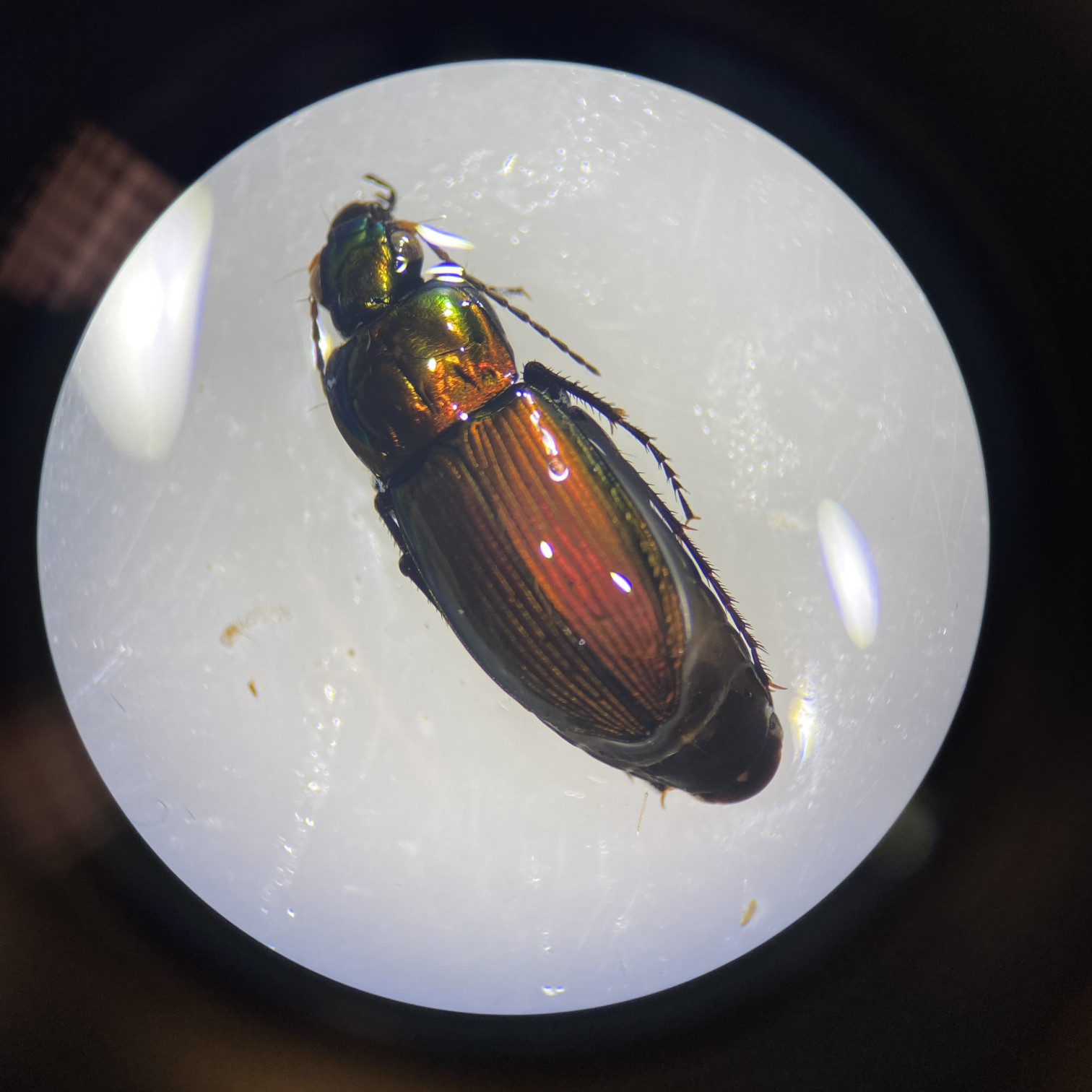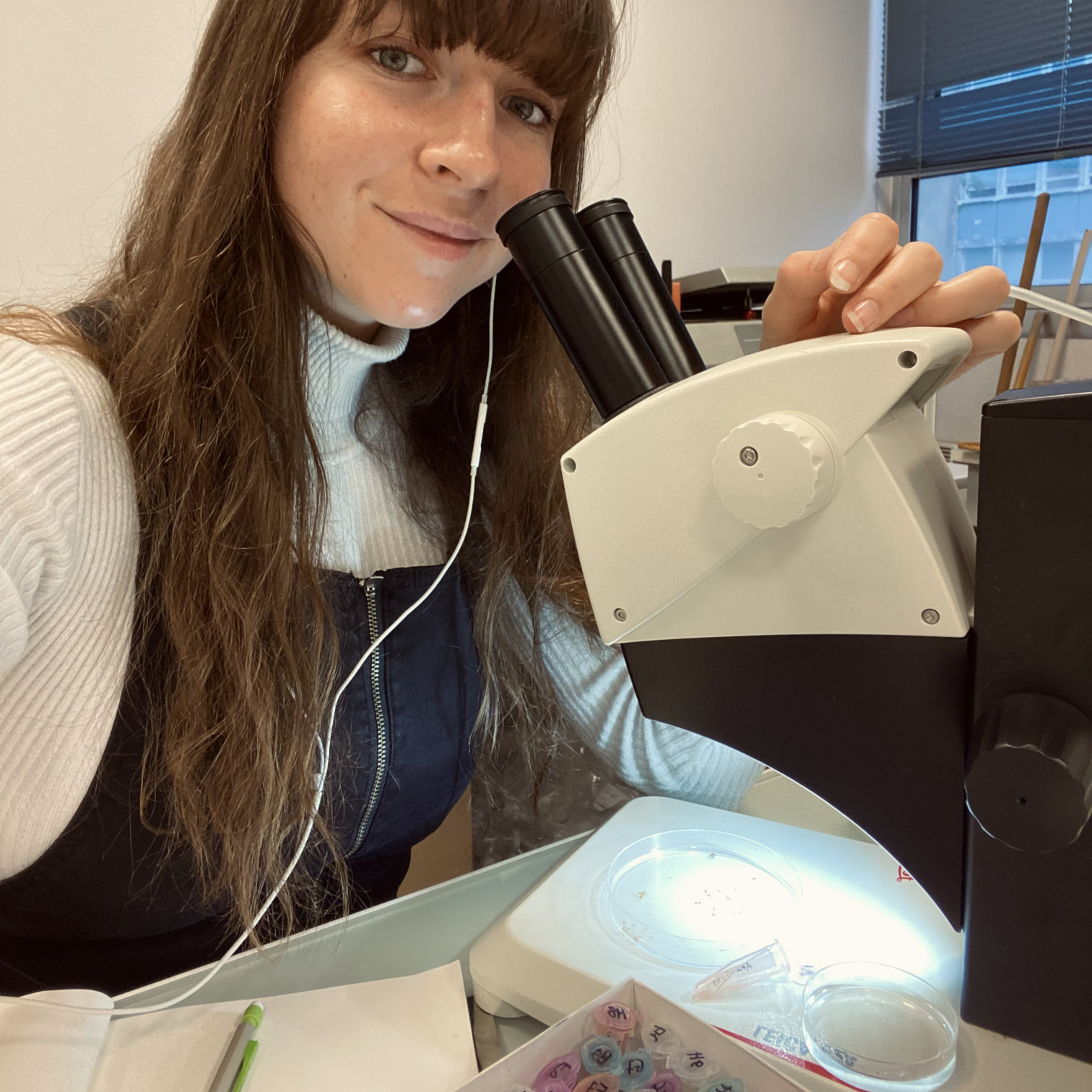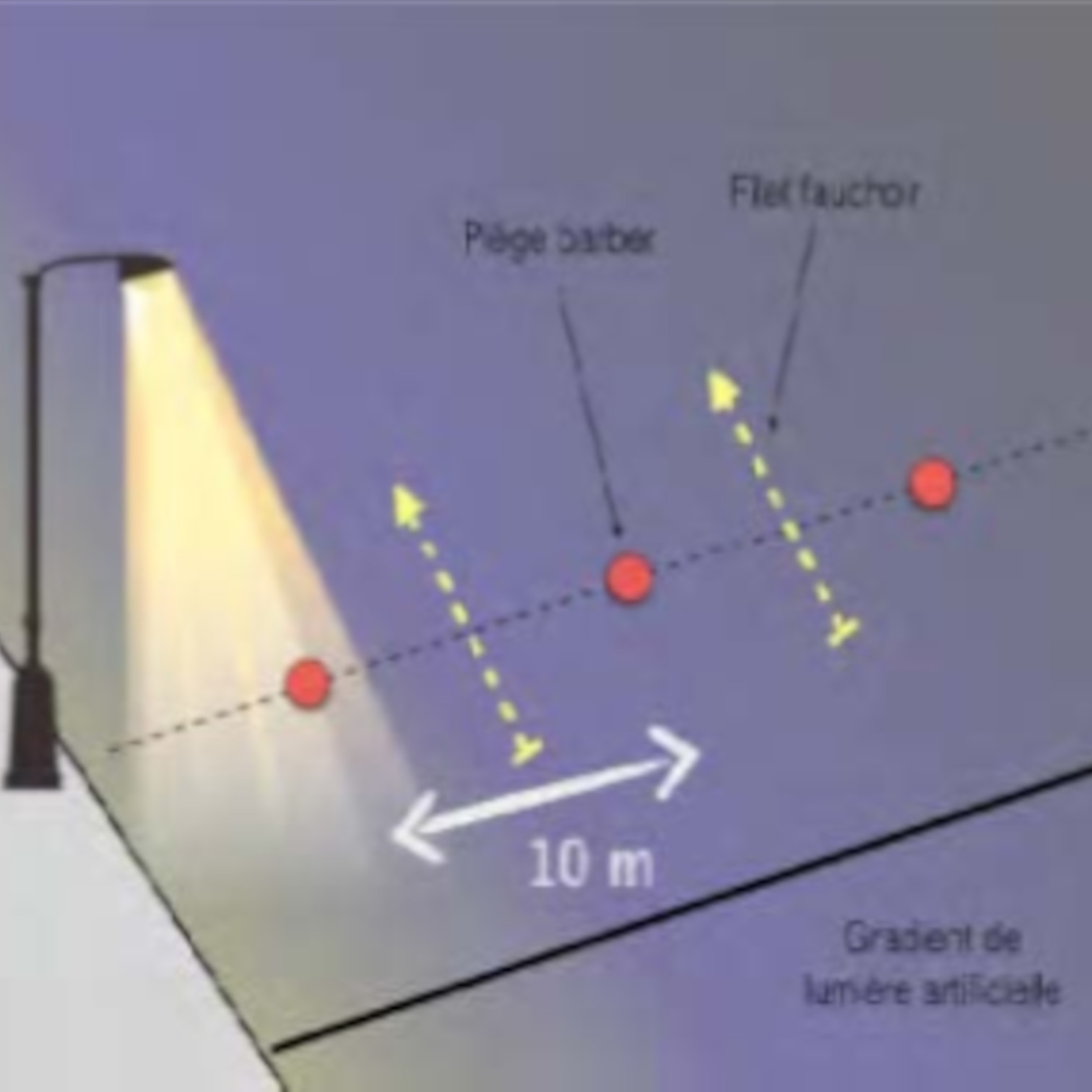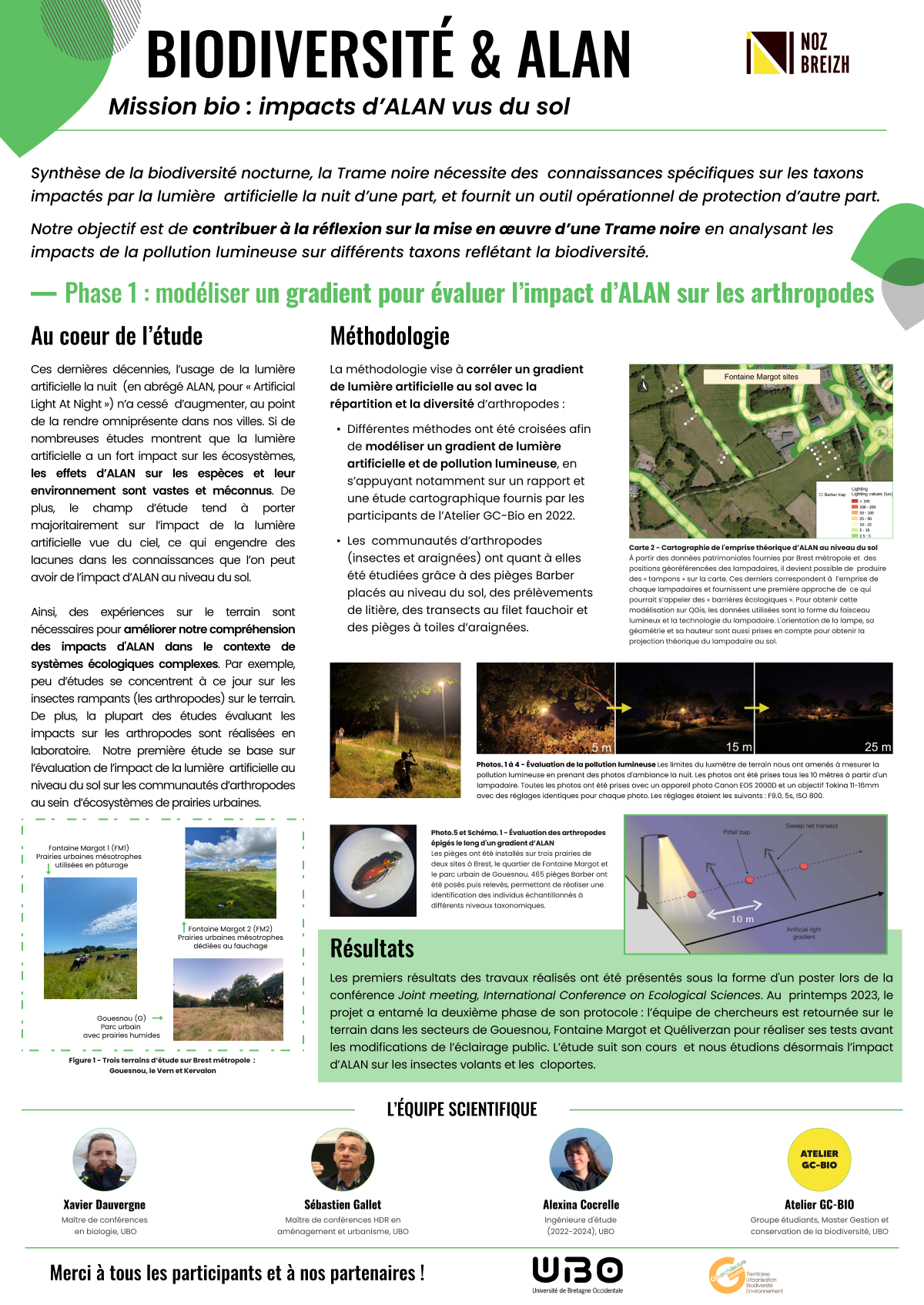ECOLOGY AND LIGHT POLLUTION
In recent decades, the use of artificial light at night (ALAN for short) has grown steadily, to the point where it is now ubiquitous in our cities. While numerous studies show that artificial light has a strong impact on ecosystems, the effects of artificial light at night on species and their environment are vast and often little known.
As such, few studies to date focus on crawling insects (arthropods) in the field. Besides, studies tend to focus mainly on the impact of artificial light as seen from the sky, resulting in gaps in our knowledge of the impact of light on arthropods at ground level.
As part of our study, we set up different methods according to an artificial light gradient, at 3 sites in the Brest metropolitan area (Gouesnou, le Vern and Kervalon). The aim is to contribute to the debate on the implementation of a "Trame noire", by analyzing the impact of light pollution on different taxa.
In the framework of this program, our aim is to enlarge the knowledge on general ordinary biodiversity and notably on arthropods (e.g. spiders, moths) and on nocturnal soundscape (which include all kinds of nocturnal species). We also developed a common methodology for ANL’s impact evaluation.
In autumn 2022, Alexina Cocrelle continued the work begun by the GC Bio student workshop in 2021 and developed during her internship as a Study Engineer. The first results of the work carried out on Axis 3 were presented in the form of a poster at the Joint meeting, International Conference on Ecological Sciences.
In spring 2023, the project entered the second phase of its protocol. To this end, the team of researchers returned to the field in Gouesnou, Fontaine Margot and Quéliverzan districts to carry out their tests prior to the street lighting modifications. The study is well underway: 465 Barber traps have been set and collected, enabling the identification of individuals. From now on, we'll be studying the impact of artificial light on flying insects and sowbugs.
Traps have been set up in the meadows of two sites in Brest: Fontaine Margot district and Gouesnou urban park.
The research and documentation work is carried out by Alexina Cocrelle, a research engineer within the Chair.
The methodology aims to correlate a gradient of artificial light on the ground with the distribution and diversity of arthropods.
Our publications regarding ALAN & Biodiversity
Posters
Citation : Chaire Noz Breizh (2024), Mission bio : impacts d’ALAN vus du sol, présenté dans le cadre du colloque Smart Noz, Brest, 18-20 mars 2024
SFE2 GFÖ EEF International Conference on Ecological Sciences, 21st to 25th November 2022 Metz (France)
Internships reports
Cocrelle, A., (2022), Analyse de l’impact de la pollution lumineuse sur la biodiversité pour contribuer à la réflexion sur la mise en œuvre d’une Trame noire à l’échelle de la métropole brestoise, Mémoire de stage Master 2, Université de Lille.
Contributions
Our meetings
Several demonstrations of our works on biodiversity and ALAN were carried out as part of events organized by the Noz Breizh chair and its partners, notably at:
- Cop Locale 2022 conference
- Fêtes de la science 2022 and 2023
- Smart Noz scientific and artistic seminars in Kerangoff and Kereder
- 19th European Researchers' Night 2023










